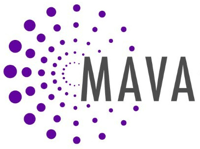This article originally appeared on www.mavanetwork.org and is featured here in partnership with the Minnesota Alliance for Volunteer Advancement.
![]()
One of the challenges we face as volunteer engagement professionals is figuring out how we can effectively collaborate with community partners.
For those of us who are newer to volunteer engagement, it can seem that we are alone in the struggles that we encounter in our work and in many cases it’s just one staff or a small group of staff within the volunteer department.
It is important for us to realize that now, more than ever, we need to be willing to reach out to other nonprofits and community organizations that can help us grow, learn, and improve in our work.
This blog discusses three key elements that the Union Gospel Mission Twin Cities has identified as essential for effective community collaboration.
1. Find Organizations Within Your Sector
The Union Gospel Mission Twin Cities is part of a local cohort of nonprofits focused on homelessness.
A group of volunteer managers from two dozen local organizations meet to discuss best practices, ways to pool our resources and other types of collaboration.
Being with a group of individuals who are at organizations doing similar work helps with not feeling alone in solving problems and trying to seek help in volunteer engagement.
If there are networks that focus on your particular sector, it is highly recommended to participate.
2. Professional Networking
Being a part of organizations like MAVA (Minnesota Alliance for Volunteer Advancement) are also important in expanding your collaboration with the community.
We need to not only grow in our external outreach and partnerships, but we also need to focus on how to grow ourselves as volunteer engagement professionals.
MAVA does an excellent job of offering ongoing trainings, networking gatherings and other opportunities to educate and grow in understanding relevant topics on the forefront of the profession.

Like this article?
Get more like it, plus access to exclusive reports, training, and networking events by joining MAVA's network of Volunteer Engagement Professionals.
3. Charting Your Community Partnerships
The Union Gospel Mission Twin Cities we established a matrix of levels of engagement for our community partners.
They work with many churches, corporate and school groups that send them volunteers and support UGM.
This matrix helps them classify their more committed partners from our casual partners.
There’s a wide range of attributes that they look for, track and discuss with their staff. It has helped them work with community groups based on their capacity and vision, rather than saying yes to every opportunity that they receive.
Building Effective Community Partnerships
These are just a few suggestions for effective community partnerships and ways to collaborate.
As we move forward in our work, we will realize the continued importance of working together to accomplish our work. Through the power of volunteering, we can help solve many of the issues facing our communities.





